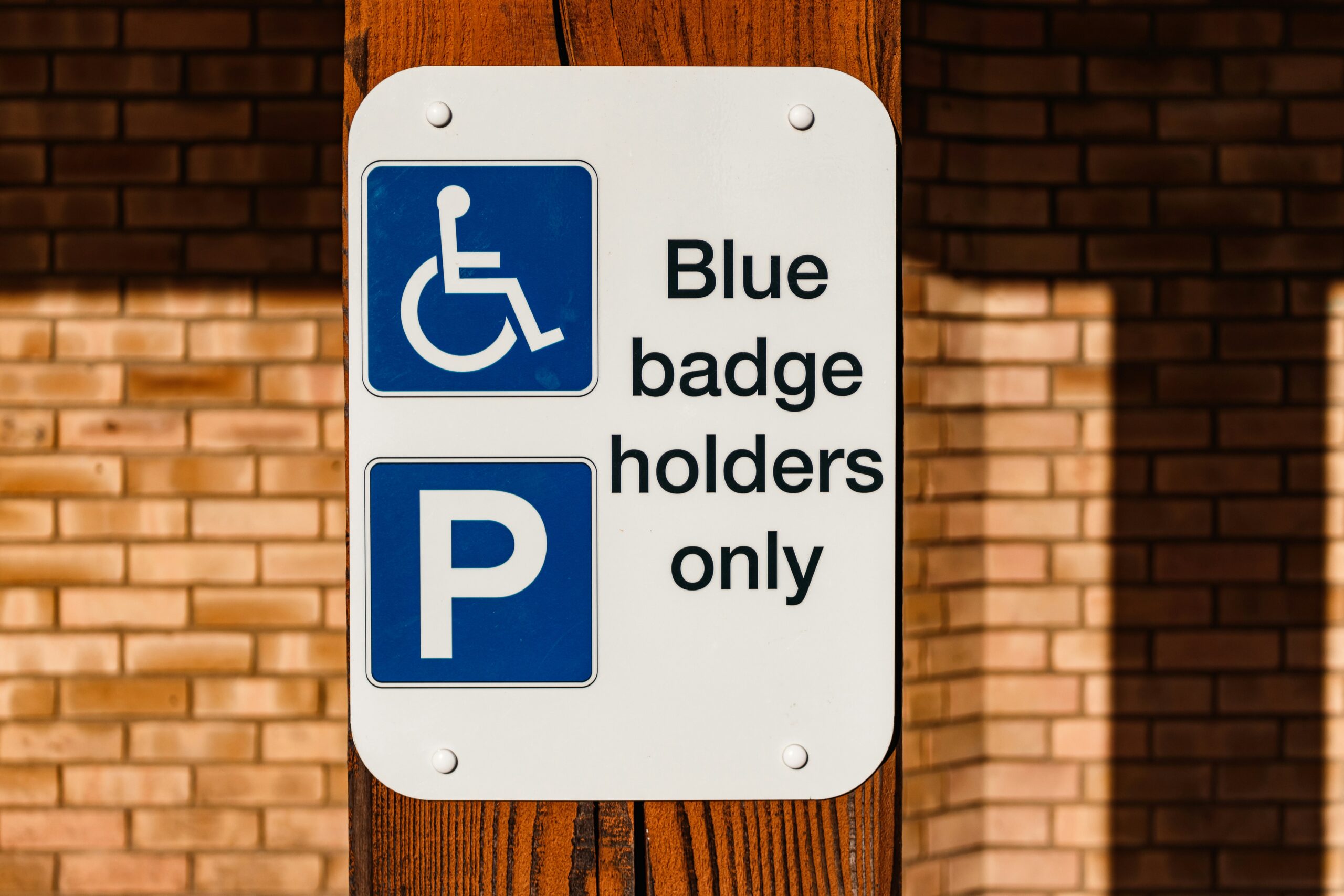In order to ensure the safety and well-being of employees with mobility issues during workplace emergencies, it is crucial to have a well-equipped emergency kit tailored to their specific needs. This article explores the essential items that should be included in a workplace emergency kit for employees with mobility issues, such as a portable ramp, a communication device, emergency medication, and personal identification documents. By having these necessary items readily available, employers can proactively address the unique challenges that individuals with mobility issues may face in emergency situations, fostering a safer and more inclusive work environment.
Understanding Specific Needs
Recognizing the unique requirements of individuals with mobility issues
When preparing an emergency kit for employees with mobility issues, it is essential to recognize and understand their unique requirements. Mobility issues can vary greatly from person to person, so it is crucial to consult with each individual to gain insight into their specific needs. This may include understanding their level of mobility, any assistive devices they rely on, and any additional medical conditions that may impact their ability to evacuate quickly and safely.
Consulting with employees to understand their specific needs
To ensure the emergency kit is tailored to each individual’s specific needs, it is essential to consult with the employees themselves. Engage in open and honest conversations to gain a complete understanding of their limitations and requirements during an emergency situation. By actively involving employees and valuing their input, you can create a more inclusive and effective emergency plan.
Involving healthcare experts to provide insight into necessary aid items
Consulting with healthcare experts can provide valuable insight into the necessary aid items to include in the emergency kit. These professionals can help identify the most commonly needed assistive devices, such as wheelchairs, portable ramps, crutches, walkers, and canes. By involving healthcare experts, you can ensure that the emergency kit is well-equipped to accommodate the unique needs of employees with mobility issues.
Accessible Evacuation Plan
Communicating a clear plan for evacuation in emergencies
One of the most critical aspects of preparing for emergencies is having a clear and concise plan for evacuation. This plan should be communicated to all employees, including those with mobility issues, in a manner that is easy to understand and accessible. Provide written instructions, visual aids, and clear verbal communication to ensure that everyone knows their role and how to evacuate safely.
Designing for wheelchair accessibility, where needed
When developing an accessible evacuation plan, it is important to consider wheelchair accessibility. Identify potential obstacles and barriers within the workplace that may impede the safe evacuation of individuals using wheelchairs. Install ramps, widen doorways, and ensure that emergency exits are easily reachable for individuals with mobility issues. By designing for wheelchair accessibility, you can create a more inclusive and accommodating environment during emergencies.
Training for staff about assistance in evacuations
To ensure the smooth and efficient evacuation of employees with mobility issues, it is crucial to provide thorough training to all staff members. Train employees on how to assist individuals with mobility issues, including proper techniques for transferring individuals from wheelchairs to evacuation chairs if necessary. Additionally, educate staff on the location and proper use of any assistive devices or aids included in the emergency kit. By providing comprehensive training, you can empower all staff members to assist in evacuations effectively.

Mobility Aids
Including necessary aids like wheelchairs
When assembling an emergency kit for employees with mobility issues, it is imperative to include necessary aids such as wheelchairs. Wheelchairs can greatly enhance the mobility and independence of individuals with mobility issues during emergencies. Ensure the emergency kit includes lightweight, foldable wheelchairs that are easy to transport and assemble.
Possibility of having portable ramps
Portable ramps can be invaluable in situations where access ramps are not readily available. Including portable ramps in the emergency kit allows for greater flexibility in accommodating accessibility needs during evacuations. Choose ramps that are lightweight, sturdy, and easy to set up to ensure a quick and efficient evacuation process for individuals with mobility issues.
Stocking up on crutches, walkers, canes
In addition to wheelchairs and portable ramps, it is vital to stock up on other assistive devices commonly used by individuals with mobility issues. Crutches, walkers, and canes can provide essential support and stability during evacuations. Ensure the emergency kit includes an ample supply of these aids to accommodate the needs of employees with mobility issues.
Medication and First Aid
Provision for storing necessary regular medication
Employees with mobility issues may have medications that they require regularly. When assembling an emergency kit, it is crucial to provide a designated space for employees to store their necessary regular medication. This ensures that medications are easily accessible during emergencies and helps to avoid any potential delays or complications in administering medication.
Keeping a well-stocked first aid kit
A well-stocked first aid kit is essential in any workplace emergency kit. Ensure the first aid kit includes all the necessary supplies, such as bandages, gauze pads, adhesive tape, scissors, and tweezers. Consider including specialized items such as blister pads or splints that may be beneficial for individuals with mobility issues.
Having pain relievers, bandages, and wound disinfectants
Pain relievers, bandages, and wound disinfectants are essential items to include in the emergency kit for employees with mobility issues. These items can help address minor injuries that may occur during an emergency. Ensure that an ample supply of pain relievers, various sizes of bandages, and wound disinfectants are readily available to provide immediate relief and aid in managing injuries.

Food and Water
Stocking up on non-perishable food items
In any emergency situation, access to food may become limited. It is important to stock up on non-perishable food items in the emergency kit, including items that accommodate various dietary restrictions and preferences. Choose items that are easy to open and consume without the need for additional cooking or preparation.
Maintaining purified bottled water
Clean and safe drinking water is a vital component of any emergency kit. Ensure an ample supply of purified bottled water is readily available to meet the hydration needs of employees with mobility issues during emergencies. Regularly check the expiration dates of the water bottles to ensure their freshness and replace as needed.
Special dietary requirements if any
Consider any special dietary requirements that employees with mobility issues may have when selecting food items for the emergency kit. Accommodating these dietary needs ensures that everyone can sustain their health and well-being during an emergency. Include options for individuals with allergies, sensitivities, or specific dietary restrictions to create a more inclusive emergency kit.
Emergency Blankets
Insulating mylar thermal blankets
Emergency blankets made of insulating mylar material can be crucial in maintaining body temperature and preventing hypothermia in emergency situations. Include these lightweight and compact blankets in the emergency kit to ensure individuals with mobility issues have access to proper warmth and insulation.
Extra regular blankets for individuals who may have trouble maintaining regular body temperature
In addition to mylar thermal blankets, it is essential to include extra regular blankets in the emergency kit. Some individuals with mobility issues may have difficulty maintaining regular body temperature, especially in stressful situations. By providing extra blankets, you can ensure that everyone can stay warm and comfortable during emergencies.

Flashlights and Batteries
Providing easy-to-use flashlights
Flashlights are essential tools during emergencies, enabling individuals to navigate in dark or low-light conditions. When selecting flashlights for the emergency kit, choose models that are lightweight, compact, and easy to use. Consider options with built-in features such as adjustable brightness settings or hands-free capabilities to further enhance their usefulness.
Extra batteries for mobility aids that may require them
It is important to include extra batteries in the emergency kit, particularly for any mobility aids that require them. Ensure that there are sufficient batteries available to power devices such as electric wheelchairs or scooters. Regularly check the battery levels and replace them as needed to ensure that the mobility aids remain functional during emergencies.
Communication Devices
Keeping a charged cell phone at hand
A charged cell phone is a crucial communication device during emergencies. Include a cell phone in the emergency kit, ensuring that it is fully charged and ready for use. Pre-program important emergency contacts and consider providing a charger or a portable battery pack to ensure continuous access to communication.
Walkie-talkies for instant intra-office communication
Walkie-talkies can be invaluable in facilitating instant and efficient communication within the workplace during emergencies. Include a set of walkie-talkies in the emergency kit, ensuring that they are in good working condition and have fresh batteries. Train staff members on how to use the walkie-talkies effectively to enhance communication and coordination during evacuations.
Personal Care Supplies
Inclusive supplies of personal care items
Personal care items are essential for maintaining hygiene and comfort during emergencies. Include a range of personal care supplies in the emergency kit, such as toilet paper, wet wipes, hand sanitizer, and tissues. Consider the unique needs of individuals with mobility issues and provide items that cater to their specific requirements.
Considering needs for hygiene products
When assembling the emergency kit, consider the unique hygiene needs of individuals with mobility issues. Include items such as adult diapers, bed pads, or hygiene wipes to ensure that everyone can maintain their personal hygiene and cleanliness during an emergency. By considering these needs, you can create a more inclusive and comprehensive emergency kit.
Regular Updates and Checks
Maintaining a regular schedule for updating the emergency supplies
Emergency supplies can deteriorate over time and expire, rendering them ineffective when needed. It is important to establish a regular schedule for updating the emergency supplies to ensure their freshness and functionality. Regularly check and replace items as necessary, ensuring that the emergency kit remains well-stocked and prepared for any situation.
Inspecting the supplies and their expiry dates
Regular inspections of the emergency supplies are crucial to identify any issues or expired items. Periodically check the condition of all items in the emergency kit, paying close attention to expiration dates. Remove any expired or damaged items and replace them promptly to ensure the reliability and effectiveness of the emergency kit.
Ensuring mobility aids are functional and in good repair
Mobility aids play a crucial role in the safety and well-being of employees with mobility issues during emergencies. Regularly inspect the functionality and condition of all mobility aids included in the emergency kit. Perform any necessary maintenance or repairs to ensure that the aids are in good working order and ready for immediate use.
By considering these various aspects and including the necessary items in a workplace emergency kit for employees with mobility issues, you can create a safe and inclusive environment for everyone during emergencies. Remember to regularly review and update the emergency kit to ensure its effectiveness, and involve employees and healthcare experts in the planning process to tailor the kit to their specific needs. With thorough preparation and consideration, you can ensure the well-being and safety of all employees, including those with mobility issues, during unforeseen situations.

